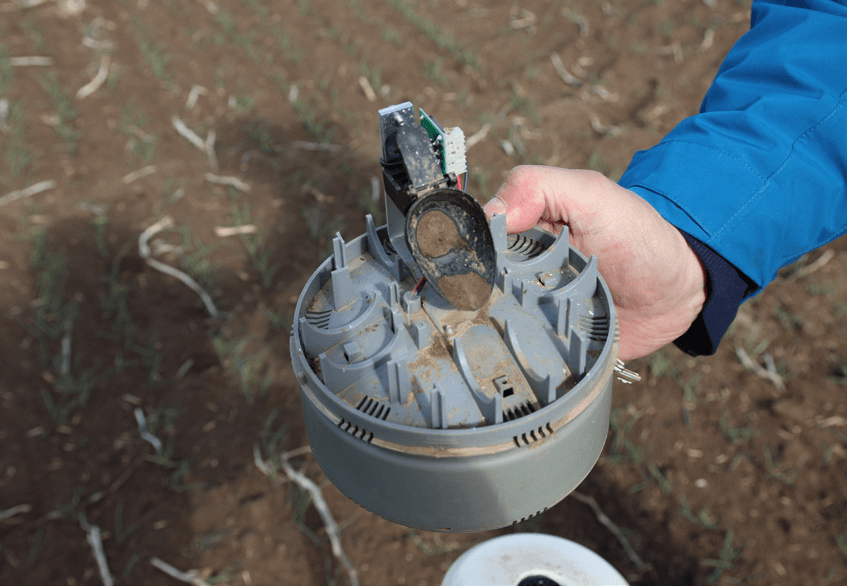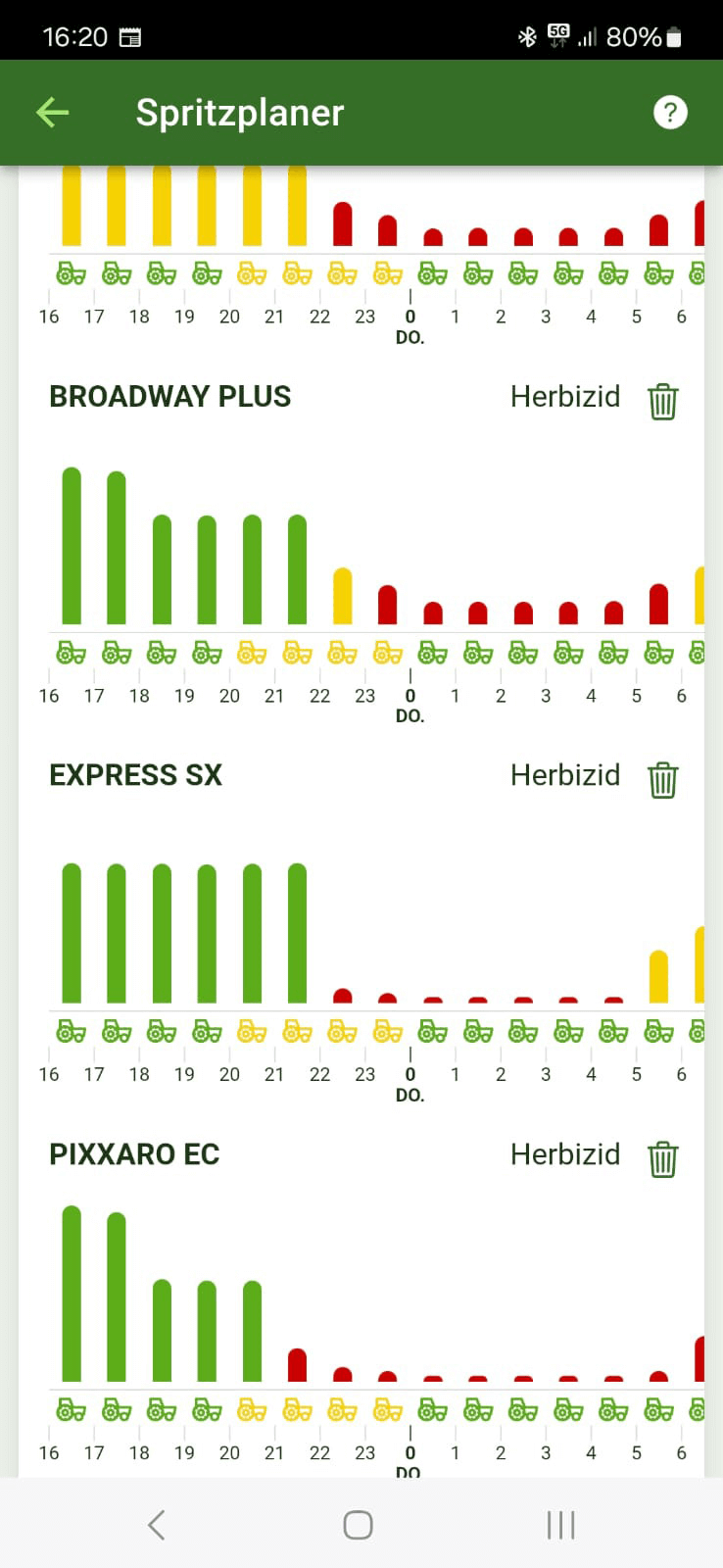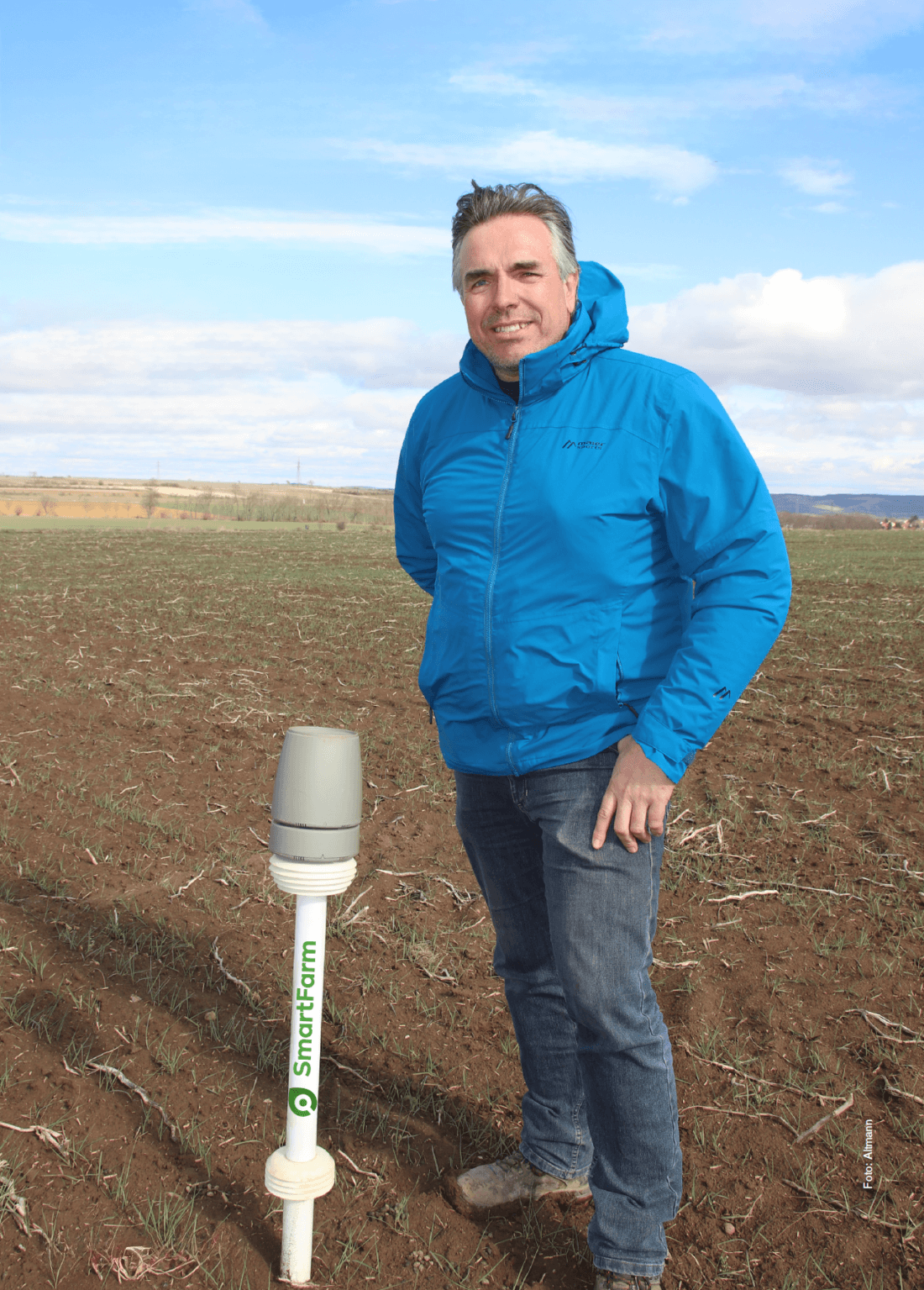In brief
Hans Gnauer has been using the weather station SmartFarm Sensor and its SmartFarm app since last year. The technology helps him determine the optimal time to apply crop protection products. The combination of real-time weather data and the app allows him to apply pesticides more efficiently, saving money and resources. Although the station has occasional technical problems with the rain gauge, it provides reliable temperature and humidity data directly from the field. The SmartFarm app also provides useful forecasting and decision support for applications under optimal conditions.
Not the desired effect again?
You probably know the problem: You apply an insecticide or herbicide, but the desired effect fails to materialize. Often this is because it was not sprayed at the right - weather-determined - time. The result? You have to go into the field again. That's bad for your wallet as well as the environment. The EU aims to reduce the use of crop protection by 50% by 2030 (SUR objectives). How do we achieve that goal while maintaining effectiveness and preventing resistance? Besides technology, the weather in particular plays a crucial role in the success of an application.
The combination makes the difference
That's where the sensor with SmartFarm app comes in. "A weather station by itself is nothing special these days," says Hans Gnauer, arable farmer of 165 ha in Maissau. He has been using the SmartFarm Sensor since last spring. The snesor measures soil temperature at 5 and 20 cm depth (relevant for seeding times), temperature at 25 and 75 cm height (in and above the crop), humidity at both heights, rainfall and via calculation also wind speed at boom height. Dew point, leaf wet time and evaporation are also calculated.
The SmartFarm app
"The app is very intuitive," says Gnauer. "I didn't grow up digital, but I can handle it just fine." The readings are displayed in the SmartFarm app. In the Spray Planner, you can see up to 48 hours ahead which times are suitable for crop protection - depending on the agent. Colors (green, yellow, red) and a zoom function make the difference between good and less good moments visual. Gnauer: "With green bars, you save up to 30% active ingredient without loss of effect." The app also includes disease forecasts for almost all crops. You can see which days gave infection chances (up to 30 days back) as well as get a four-day outlook.
Weather forecast with precipitation radar is also included. Users can share their stations, which provides additional value for scattered plots. Gnauer has four, because of the differences in microclimate between his plots.
Practical experience
After more than four years of use, Gnauer concludes, "The system helps enormously to deploy resources optimally. With less quantity I achieve the same effect." For example, in potatoes he applies one fungicide treatment less - without disease problems. In cereals, too, he experiences better herbicide effectiveness, eliminating corrections. What surprised him most: there are many more good spraying times during the day than he thought - especially between leaf drying in the morning and afternoon, and then again in the early evening.

Upon the site visit, the spoon was covered with soil and the station no longer worked.
More peace of mind and better decisions
"Since using the app for crop protection, I work more relaxed. You plan better and don't have to rush so much anymore." Especially in intensive crops such as potatoes, vegetables, fruit and viticulture, it is an advantage. The app also helps with agent selection: if for agent A is not a good time, sometimes it is better to choose agent B.
Year-round use
The station is year-round use: from wheat, to potatoes, to newly sown oilseed rape. In spring, soil temperature is important for sowing. Only on wind you have to keep watching yourself as a grower: sometimes the app still indicates a "good" time when there is too much wind. "But that's where the farmer's experience comes in, fortunately," Gnauer said.

Spray Planner: "The symbolism is like a traffic light. Green: perfect, yellow: moderate, red: better not do it. And the higher the green bar, the more active ingredient - and thus cost - you can save," Gnauer explains.
Stay informed
Keep up to date with the latest developments in SmartFarm


